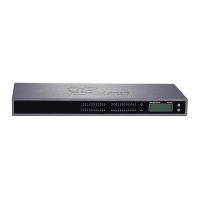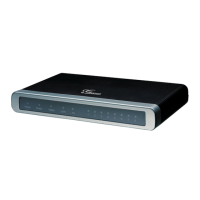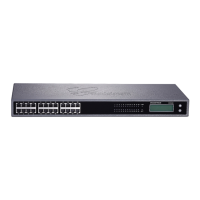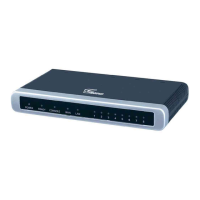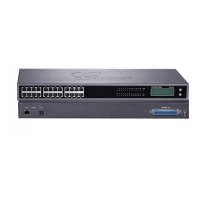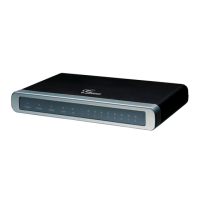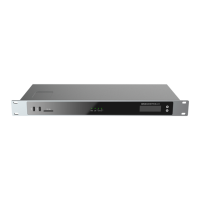TLS Cert
This is the Certificate file (*.pem format only) used for TLS connections. It contains a private key for the client and a signed certificate
the server. This file will be renamed as “TLS.pem” automatically.
Note:
The size of the uploaded certificate file must be under 2MB.
TLS Key
The size of a private key must be under 2MB. This is the private key (*.key format only) for TLS connections.
This file will be renamed as “TLS.key” automatically.
TLS CA
Cert
This file must be named with the CA subject name hash value. It contains CA’s (Certificate Authority) public key, which is used to veri
accessed servers.
Note:
The size of the uploaded CA certificate file must be under 2MB.
TLS CA
List
Display a list of files under the CA Cert directory.
Table 39: SIP Settings/TCP and TLS
External Host
Configure a static IP address and port (optional) used in outbound SIP messages if the GXW450X is behind NAT. If it is a
hostname, it will only be looked up once.
Use IP address in
SDP
If enabled, the SDP connection will use the IP address resolved from the external host. The default setting is “enabled”.
External UDP
Port
Configure the externally mapped UDP port when the GXW450X is behind a static NAT or PAT. The default setting is “5060”.
External TCP Port Configure the externally mapped TCP port when the GXW450X is behind a static NAT or PAT. The default setting is “5060”.
External TLS Port Configures the externally mapped TLS port when GXW450X is behind a static NAT or PAT. The default setting is “5061”.
Local Network
Address
Adds a list of network addresses that are considered inside of the NAT network. Multiple entries are allowed. If not configur
the external IP address will not be set correctly.
A sample configuration could be as follows:
192.168.0.0/16
Table 40: NAT Settings
ToS For SIP Configure the Type of Service for SIP packets. The default setting is None.
ToS For RTP Audio Configure the Type of Service for RTP audio packets. The default setting is None.
Send Compact SIP
Headers
If enabled, compact SIP headers will be sent. The default setting is “No”.
Note: This change requires a system reboot to take effect.
Enable Relaxed DTMF Select to enable relaxed DTMF handling. The default setting is “No”.
The configuration in this section requires system reboot to take effect.
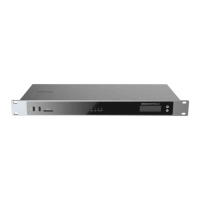
